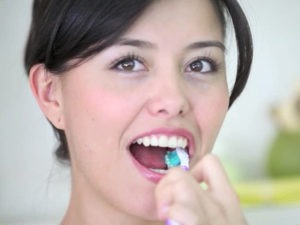
How to Brush Your Teeth
Brushing your teeth will go a long way toward good oral hygiene and disease prevention. Specifically, we brush to prevent cavities, gum disease, and bad breath. The ADA recommends that you brush twice a day with fluoride toothpaste to maintain good oral health. Most of us learn how to brush our teeth as young children.
Unfortunately, we don’t always learn the most effective way to brush our teeth as children. Despite possibly learning the correct procedure later in life, we continue the bad habits we learned in our youth. It’s time to break that trend by following these tips.
Are you confused as to the most effective way to brush your teeth? It’s no wonder. Research shows that there is a lot of mixed information out there. The American Dental Association recommends brushing two minutes at a time, twice a day with a soft bristled toothbrush. They also say not to scrub too hard with abrasive toothpastes or you may damage your tooth enamel. But other dental associations don’t agree. In today’s blog we discuss the brushing dilemma.
Dental associations inconsistent with proper brushing advice
A recent research study was done at the University College of London. They looked at numerous dental sources including dental associations, dental textbooks, and toothbrush and toothpaste companies for advice on effective ways to brush your teeth. What the researchers found was a slew of mixed information. There was no consensus among any of the sources. If dentists are getting conflicting information, how is the public going to know what to do?
Brushing Instructions for a manual toothbrush
Here are a few tips to guide you through the art of brushing:
- Use a soft bristled brush. Harder bristles can damage gums.
- Dab on a small amount of fluoride toothpaste on your toothbrush. Hold the bristles Tilt the brush at a 45-degree angle so the the bristles are aiming at the gumline. Most of the destructive bacteria grows just above and below the gum line.
- Brush the outside surfaces of the teeth, two to three teeth at a time, using a back and forth rolling motion. Then brush the inside surfaces. Be careful not to brush too hard
- Make sure that the bristles go under the gumline – between the tooth and gum.
- Brush the outside, inside and the chewing surfaces of each tooth. Make sure that you rinse the food particles off of your brush often.
- Gently brush your tongue to remove plaque and help freshen your breath.
- When finished rinse your mouth thoroughly and allow your toothbrush to air dry.
When gums bleed
If the gums bleed when your brush, it suggests poor gum health, not that you are brushing too hard. It may seem counter intuitive but we suggest that you try to make it bleed. Go after the areas that are more sensitive by sticking the bristles directly into the gum crevice. If you continue to do that, in a few days, you will not be able to make it bleed.
When gums recede
Aggressive brushing or using a firm tooth brush can cause the gum to recede. It can also cause you to lose gum from between the teeth also.
There are several suggested techniques on how to brush your teeth
Some sources cited a gentle jiggling of the toothbrush back and forth on the teeth. This will dislodge the food debris, bacteria, and plaque. Others cited a basic scrubbing motion. It was also found that brushing directly after eating sugary foods or beverages may harm more than help. Harmful bacteria begin eating the sugars and starches and producing acids within two minutes of you consuming them. Meaning by the time you brush, it’s too late. The acids will have already damaged the enamel.
The head researcher suggests brushing gently with a horizontal scrubbing motion while holding the toothbrush in a pencil grip at a 45-degree angle. This should be effective for keeping your teeth clean and your gums healthy. Of course, using dental floss between your teeth once a day is also important.
You’re Not Alone
If you don’t brush your teeth properly, you’re not alone. A recent study found that while most people in Sweden brush their teeth, only one in ten brush in a way that effectively prevents tooth decay. The study followed the brushing habits of 2,013 Swedes between the ages of 15 and 80. They examined how often and how long they brushed, how much toothpaste they used and whether it contained fluoride. The study found that 70 percent didn’t know the best way to use toothpaste, and 55 to 75 percent rinsed with water after brushing. Researchers assumed that the poor brushing habits were learned as children.
Surveys suggest many bad hygiene habits
Other dental health surveys suggest that many people only focus their brushing on their front teeth. The majority of US citizens know that flossing once a day is recommended but only 30% do. Usage of other hygiene aids such as proxy brushes, dental tape, tongue scrapers, floss threaders is less.
Learn how to brush your teeth and show off your smile
Are you overdue for a preventive dental care visit? With regular home hygiene and dental checkups, you will be at a decreased risk for future dental treatment. Daily oral care, in addition to six month cleanings, will remove harmful bacteria, plaque, and tartar buildup that can lead to gingivitis or gum disease. Call Dr. James Fondriest at 847-234-0517 to schedule your consultation for a brighter smile.
As Benjamin Franklin said, “An ounce of prevention is worth a pound of cure.” It is better to try to avoid problems rather than trying to fix them later. Never underestimate the value of healthy teeth and gums.
